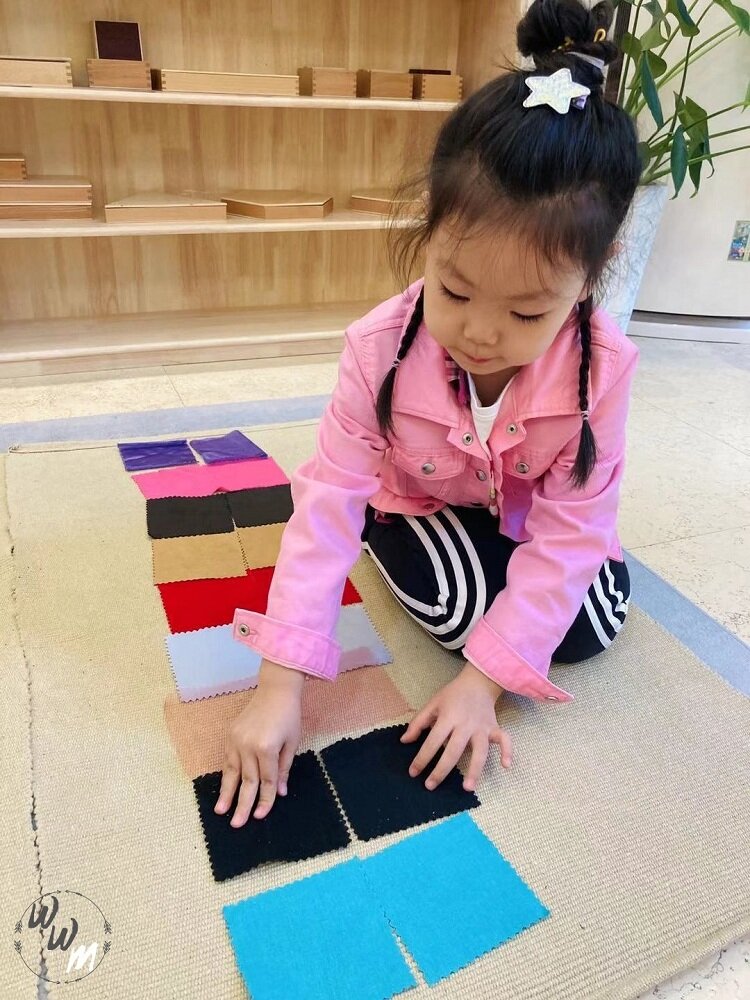What is Montessori Sensorial?
Sensorial is used in a Montessori classroom to develop the five senses: sight, listening, touch, taste, and smell. Montessori Sensorial activities help children to think cognitively, helping them in their future learning and also their personal and interpersonal development.
Children learn through experiences, and by engaging in Montessori Sensorial activities, children are able to differentiate between sizes and order through visual discrimination. Visual discrimination in Montessori Sensorial includes activities such as The Pink Tower, The Red Rods, The Broad Stair, Knobbed Cylinders, etc.
What is Visual discrimination in Montessori?
Children learn new things by seeing with their own eyes. Montessori categorises the things children see with the visual sense further by separating them into Dimension (size, length, width, and breadth of objects), Colour/Chromatic (colour awareness), and Form (shape awareness).
What is Tactile in Montessori?
Tactile in Montessori is all about touch. Children are encouraged to touch different textures and, by using their sense of touch, heighten their perception and understanding of the world around them.
Children might touch things made of silk, sandpaper, or cotton. Other times, children may be asked to match items made of the same material, while blindfolded. In this way, children must solely rely on their sense of touch in Montessori tactile to complete the task. In doing so, children feel a sense of accomplishment and self-worth. It has been shown that incorporating activities using touch in children develops the child’s kinesthetic learning and stimulates improved ability to understand. As Maria Montessori said - “The hands are the instruments of the mind”.
What is Auditory in Montessori?
Auditory is used in Montessori to heighten our children’s sense of sound perception and differentiating one sound from another. Montessori Bells and the Sound Cylinders are wonderful activities in Sensorial to help develop this sense in our children.
What is Olfactory in Montessori?
Olfactory is used in a Montessori class to develop children’s sense of smell and help them differentiate different types of smells. You will often present The Smelling Bottles activity to teach children about the different smells in their environment.
What is Gustatory in Montessori?
Gustatory is used in a Montessori classroom to help children differentiate different foods. This can be done using the Practical Life activities for grating and slicing up different fruits and vegetables, then tasting them to distinguish the different tastes. In Montessori gustatory, children can also learn where about our taste buds are in our mouth.
Always try and engage with your children and ask them certain questions, letting them think for themselves. For example: “What do you taste when you eat a bar of chocolate? Is it sour, bitter, or sweet?” Let the children figure out what their taste buds experience when eating different types of food.
By working with these different Montessori Sensorial materials, children’s senses are heightened. It is such a wonderful way to teach children, who in turn, love working with these materials.



